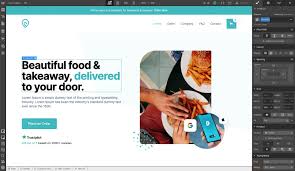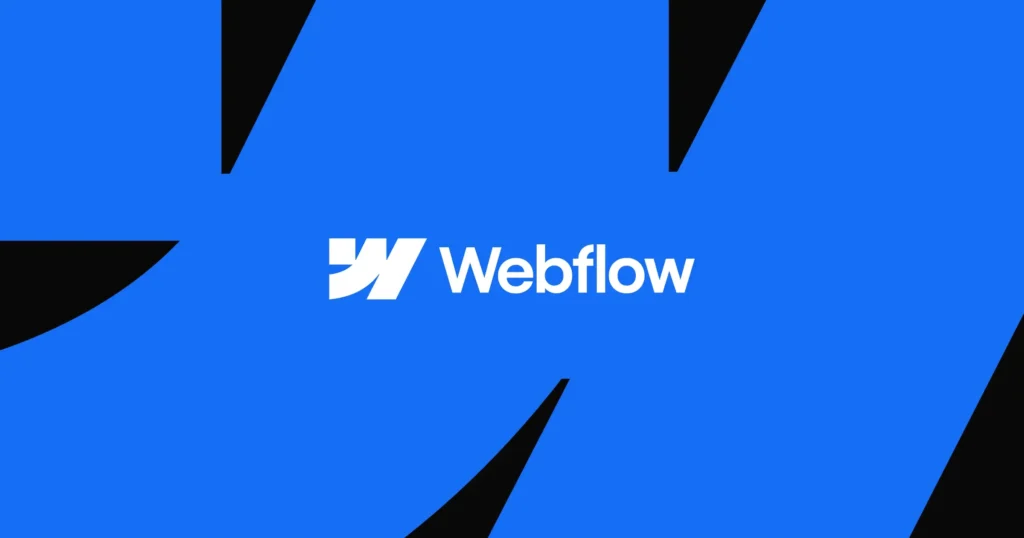The Scope of Webflow: Why It’s Revolutionizing Web Design
Webflow has emerged as a game-changer in the world of web design and development. It’s an all-in-one platform that combines the power of a website builder with the flexibility of a custom web development solution. Whether you’re a business owner, designer, or developer, Webflow’s unique features offer powerful solutions for building beautiful, responsive websites without the need for extensive coding knowledge.
In this post, we’ll explore the scope of Webflow, how it’s transforming web design, and why it’s becoming a top choice for entrepreneurs and businesses looking to build stunning websites quickly and effectively.

What is Webflow?
Webflow is a web design platform that allows you to design, build, and launch responsive websites visually. Unlike traditional website builders like WordPress or Wix, Webflow enables designers to create custom websites using a drag-and-drop interface while having full control over HTML, CSS, and JavaScript.
Webflow’s main appeal lies in its ability to combine the best aspects of both design and development tools, allowing users to create high-quality websites without requiring deep technical expertise. It’s the perfect solution for both designers who want flexibility and developers who need more control.
Scope of Webflow: Key Features and Benefits
1. Visual Design with Full Customization
Webflow provides a design-first approach, enabling users to visually create websites with an intuitive drag-and-drop interface. While most website builders have pre-designed templates that limit customization, Webflow allows complete creative freedom, so you can design custom layouts, animations, and interactions.
Keywords: Visual design, drag-and-drop website builder, website customization, responsive design


2. Responsive and Mobile-Friendly Websites
With mobile-first design becoming crucial for SEO and user experience, Webflow shines by making it simple to design mobile-friendly websites. It allows you to customize how your website appears on different devices without writing any extra code, ensuring that your site will be accessible on smartphones, tablets, and desktops.
Keywords: mobile-friendly websites, responsive websites, mobile design, mobile-first web design
3. Clean Code and SEO-Friendly Structure
One of Webflow’s biggest advantages is its ability to generate clean, production-ready code automatically. You don’t have to worry about messy code or inconsistent styles. Plus, Webflow’s built-in SEO tools make it easy to optimize your website for search engines, with customizable meta tags, alt text, and more.
Keywords: clean code, SEO optimization, Webflow SEO tools, search engine optimization
4. CMS and Dynamic Content Management
Webflow’s Content Management System (CMS) lets you manage and update your website’s dynamic content effortlessly. This is particularly helpful for blogs, portfolios, or e-commerce sites where content is constantly changing. The CMS is flexible and customizable, meaning it can be tailored to suit your needs, whether you’re running a blog or managing an online store.
Keywords: Webflow CMS, dynamic content, content management system, blog management
5. E-Commerce Functionality
In addition to standard websites, Webflow also offers full e-commerce capabilities. Whether you’re running a small online shop or a larger-scale business, Webflow makes it simple to build and manage an e-commerce site. You can design custom product pages, manage inventory, and process payments—all within the same platform.
Keywords: Webflow e-commerce, build an online store, e-commerce website, Webflow online shop
6. Webflow Hosting and Security
Webflow provides secure, fast, and reliable hosting options. With built-in SSL certificates, global content delivery networks (CDN), and automatic backups, Webflow ensures that your website is always up and running with minimal downtime.
Keywords: Webflow hosting, secure hosting, CDN hosting, website security
7. Collaboration and Team Management
Webflow allows for seamless collaboration between teams. Designers, developers, and content managers can work together in real-time, making it easier to coordinate and streamline the web design process. It also provides options for client handoff, where clients can update content without modifying the design.
Keywords: team collaboration, client handoff, real-time design, Webflow teamwork
Why Webflow is Perfect for Entrepreneurs and Businesses
Webflow is an excellent solution for businesses looking to create a powerful online presence without relying on a development team. Whether you’re a startup, an agency, or an established business, the platform offers flexibility, scalability, and ease of use, all while producing stunning, professional websites.
For entrepreneurs, Webflow offers the perfect combination of design freedom, control over the site’s performance, and cost-efficiency. You can create and launch a website in no time, even if you don’t have a background in coding or web development. Plus, Webflow’s integration with other tools, like Google Analytics and Zapier, allows you to track performance and automate workflows easily.
Webflow vs. Traditional Web Design
Compared to traditional website design approaches, Webflow reduces the need for coding knowledge while providing advanced customization. Unlike platforms like WordPress that require installing third-party plugins or hiring developers, Webflow offers a complete package—from design to hosting—ensuring faster development times and reduced costs. It’s the best of both worlds for designers and developers alike.
Keywords: Webflow vs WordPress, no-code website design, Webflow vs traditional web design
Conclusion: The Future of Web Design with Webflow
The scope of Webflow is vast and growing. Whether you’re a freelance designer, a business owner, or a creative agency, Webflow offers an all-encompassing solution to build and launch visually stunning websites. With its easy-to-use interface, powerful design tools, and SEO-friendly features, Webflow is redefining the web design process.
By embracing Webflow, you can stay ahead of the curve, ensuring that your website is not only beautiful and functional but also optimized for growth in an ever-evolving digital landscape.






